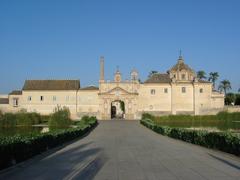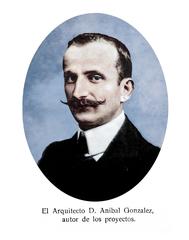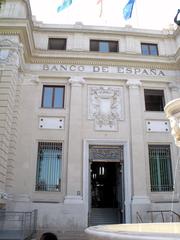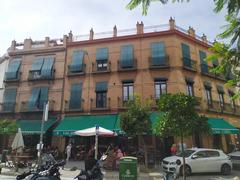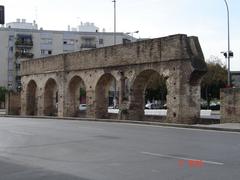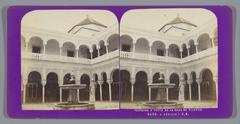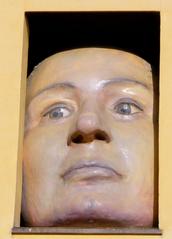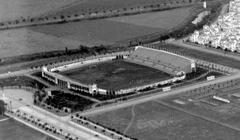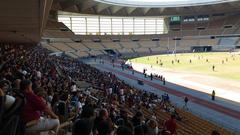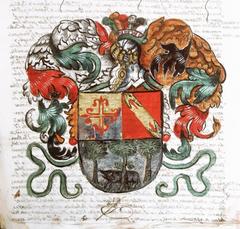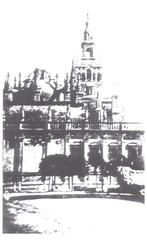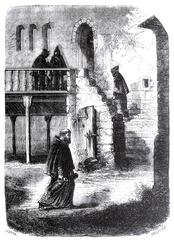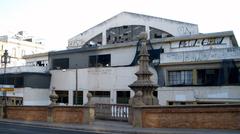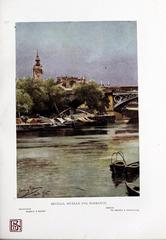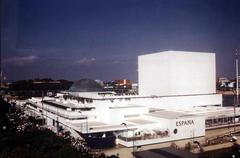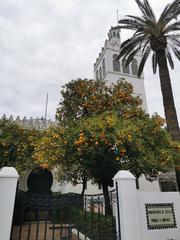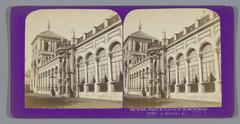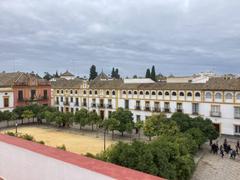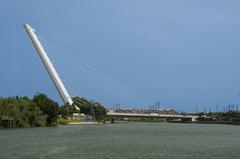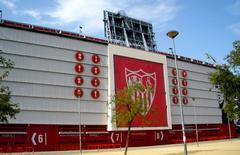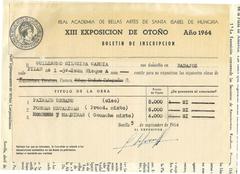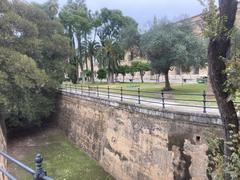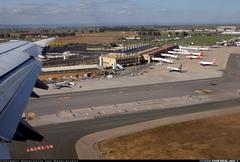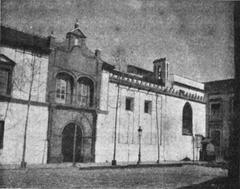
Casa de Murillo: Complete Visitor Guide to Seville’s Historic Home Museum
Introduction
Casa de Murillo, located in Seville’s atmospheric Barrio de Santa Cruz, stands as a tribute to Bartolomé Esteban Murillo, one of Spain’s most influential Baroque painters. This elegantly restored 17th-century residence immerses visitors in the domestic world and creative legacy of Murillo, offering a window into Seville’s Golden Age and the Baroque movement that flourished within its walls. This comprehensive guide details everything you need to plan your visit, including opening hours, ticketing, accessibility, exhibition highlights, and nearby attractions, ensuring a memorable and insightful experience in the heart of Seville.
Table of Contents
- Introduction
- Casa de Murillo: A Must-See Historical Site
- Visiting Hours, Tickets, and Accessibility
- Guided Tours and Events
- Architectural and Historical Highlights
- Murillo’s Artistic Legacy and Context
- Visitor Experience and Practical Information
- Nearby Attractions and Suggested Itineraries
- Visuals and Media
- Frequently Asked Questions (FAQ)
- Conclusion and Recommendations
- Useful Links and References
Casa de Murillo: A Must-See Historical Site
Casa de Murillo is more than a museum; it is a preserved slice of Sevillian history. Once the home and workshop of Bartolomé Esteban Murillo, it offers a rare look at the daily environment of a seminal Baroque artist and stands as a symbol of Seville’s cultural flourishing in the 17th century. Its central location also places visitors steps away from some of Seville’s most iconic landmarks, making it an essential stop on any cultural itinerary (Casa de Murillo Official Website, Seville Tourist Information).
Visiting Hours, Tickets, and Accessibility
Visiting Hours
Casa de Murillo typically welcomes visitors from Tuesday to Sunday, 10:00 AM to 6:00 PM. The museum is closed on Mondays and public holidays. Hours may vary seasonally or during special events, so checking the official website or local tourism resources before your visit is advisable (Casa de Murillo Official Website, NotJustATourist).
Tickets
- General Admission: €5
- Reduced Admission: €3 (students, seniors, EU citizens under 25)
- Children under 12: Free
- Guided Tour Supplement: €2 per person
- Special Exhibitions: May require separate ticketing
Tickets can be purchased online through authorized platforms or at the entrance, subject to availability (WhichMuseum).
Accessibility
The museum strives to accommodate all visitors. While the historic architecture features stairs and some uneven flooring, ramps and assistance are available where possible. For those with mobility needs, it’s recommended to contact the museum ahead of time (WhichMuseum).
Guided Tours and Events
Casa de Murillo offers regular guided tours that delve into the history of the house, Murillo’s artistic journey, and the context of 17th-century Seville. Special events, educational workshops, and temporary exhibitions are held throughout the year, especially during major cultural occasions such as “Murillo Year.” Check the museum’s event calendar for up-to-date schedules and booking information (Casa de Murillo Official Website).
Architectural and Historical Highlights
Origins and Layout
Located at Calle Santa Teresa, 8, Casa de Murillo exemplifies classic Sevillian domestic architecture. Its two floors are organized around a central patio with arcades and columns, a design that provided both social prestige and natural cooling during Seville’s hot summers. The understated façade, whitewashed walls, and use of brick, wood, and decorative azulejos showcase the Mudéjar influence typical of the city (sevillacitycentre.com, Spain.info).
Historical Evolution
The house was converted into a museum in 1982, following its designation as a site of cultural interest. Restoration efforts have preserved its original elements while adapting parts of the building for use as a cultural center and government offices. Though only a portion is open to the public, the museum space is carefully curated to evoke the ambiance of Murillo’s era (sevillacitycentre.com).
Murillo’s Artistic Legacy and Context
The Sevillian Baroque
Murillo (1617–1682) is revered as a central figure of the Sevillian Baroque, known for his luminous palette and empathetic portrayals of both sacred and everyday subjects. His works, such as “The Young Beggar” and “Two Children Eating a Melon and Grapes,” reflect the contrasts of 17th-century Seville—its wealth and poverty, religious fervor, and humanitarian spirit (dailyartmagazine.com).
Artistic Collaborations
Murillo co-founded Seville’s Academy of Painting in 1660, fostering artistic exchange with contemporaries like Francisco de Zurbarán and Juan de Valdés Leal. His association with charitable institutions, particularly the Hermandad de la Santa Caridad, influenced his choice of subjects and themes (dailyartmagazine.com).
Interpretive Exhibitions
While Casa de Murillo does not house original paintings—most are in the Museo de Bellas Artes de Sevilla—the museum offers high-quality reproductions, multimedia presentations, and interpretive panels that contextualize Murillo’s achievements (WhichMuseum). Temporary exhibitions and educational programs deepen appreciation for his legacy.
Visitor Experience and Practical Information
Museum Atmosphere
The museum’s layout is intimate, with rooms furnished to evoke a 17th-century Sevillian home. The central patio, adorned with potted plants and a historic well, offers a serene retreat. Visitors often praise the authentic atmosphere and period décor (WhichMuseum).
Duration and Flow
Most guests spend about an hour exploring the exhibition spaces. The museum’s small size makes it ideal for a focused cultural stop or as part of a broader tour of Barrio de Santa Cruz (TripHobo).
Facilities
- Restrooms: Availability may be limited.
- Café/Gift Shop: Not available on site.
- Audio Guides: Multilingual audio guides provide insightful commentary.
Accessibility
Some areas may be challenging for those with mobility impairments; contact the museum for details before visiting.
Nearby Attractions and Suggested Itineraries
Casa de Murillo’s prime location allows for seamless exploration of other Seville highlights:
- Seville Cathedral and Giralda Tower
- Real Alcázar
- Hospital de los Venerables (Velázquez Center)
- Museo de Bellas Artes de Sevilla
- Casa de Pilatos
- Museo del Baile Flamenco
Combine your visit for a full day immersed in Seville’s historic and artistic heritage (WhichMuseum, thesevilleguide.com).
Visuals and Media
For a richer experience, explore high-quality images and virtual tours on the official museum website. Suggested alt text for images includes: “Casa de Murillo central patio with traditional Andalusian well” and “Reproduction of Murillo’s paintings inside Casa de Murillo” (Casa de Murillo Official Website).
Interactive maps highlighting Casa de Murillo and nearby attractions are recommended for effective route planning.
Frequently Asked Questions (FAQ)
Q: What are Casa de Murillo’s opening hours?
A: Tuesday to Sunday, 10:00 AM–6:00 PM; closed Mondays and public holidays.
Q: Is there an entrance fee?
A: General admission is €5, reduced rates available, and children under 12 enter free. Special exhibitions may require separate tickets.
Q: Are guided tours available?
A: Yes, regular guided tours and occasional workshops are available. Booking in advance is recommended.
Q: Is the museum accessible for visitors with disabilities?
A: Accessibility is limited due to the historic structure; ramps and assistance are provided where possible. Contact the museum ahead of time for details.
Q: Can I take photos inside?
A: Photography policies may vary; check with museum staff upon arrival.
Conclusion and Recommendations
Casa de Murillo offers an authentic and immersive journey into Seville’s Baroque history and the world of Bartolomé Esteban Murillo. Its blend of intimate architecture, well-curated exhibitions, and engaging cultural programs make it a valuable stop for art lovers, history buffs, and travelers alike. The museum’s central Santa Cruz location makes it easy to include in a day of exploring Seville’s landmark sites.
Visitor Tips:
- Check current opening hours before your visit.
- Combine your trip with nearby attractions for a full cultural itinerary.
- Use audio guides for deeper insights.
- Consider guided tours or workshops for an interactive experience.
- Plan to relax in the tranquil courtyard.
For the latest updates, upcoming events, and more on Seville’s historical sites, download the Audiala app and follow us on social media.
Useful Links and References
- Casa de Murillo Official Website
- Seville Tourist Information
- Casa de Murillo – sevillacitycentre.com
- Casa de Murillo – WhichMuseum
- Murillo’s Seville – DailyArt Magazine
- World History Journal – Seville History
- The Seville Guide – One Day in Seville Itinerary
- Spain.info – Murillo House
- NotJustATourist – Sevilla Museums Opening Hours
- TripHobo – Casa de Murillo
- Turismo Sevilla – Casa Natal de Murillo
- Evendo – Casa de Murillo
- Wikipedia – Casa de Murillo





